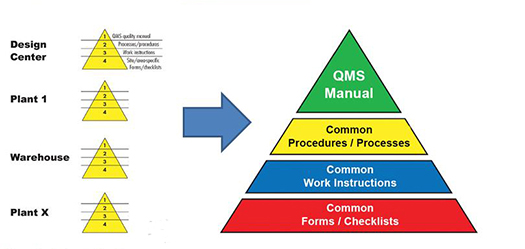What is enterprise quality? Simply put, it is a system where there is one quality manual, and a core of common processes, work instructions, and forms and checklists for a multisite environment. Why is this a good idea? Because it saves money.
|
ADVERTISEMENT |
Figure 1 illustrates how enterprise quality takes many isolated management systems and transforms them into a common one.

Figure 1: Enterprise quality for a multisite environment
Due to the aggressive time frames for implementing standards, which in many industries is 12 to 18 months, organizations in a multisite environment are shying away from an integrated management system. Instead, they are using enterprise quality as a first step toward an integrated system. There are enough savings in a companywide implementation to justify the expenditure for enterprise quality management systems. In fact, these systems are not possible without a web-based or cloud based implementation.
Enterprise quality with enterprise quality software
Enterprise quality enables global processes for:
…
Add new comment